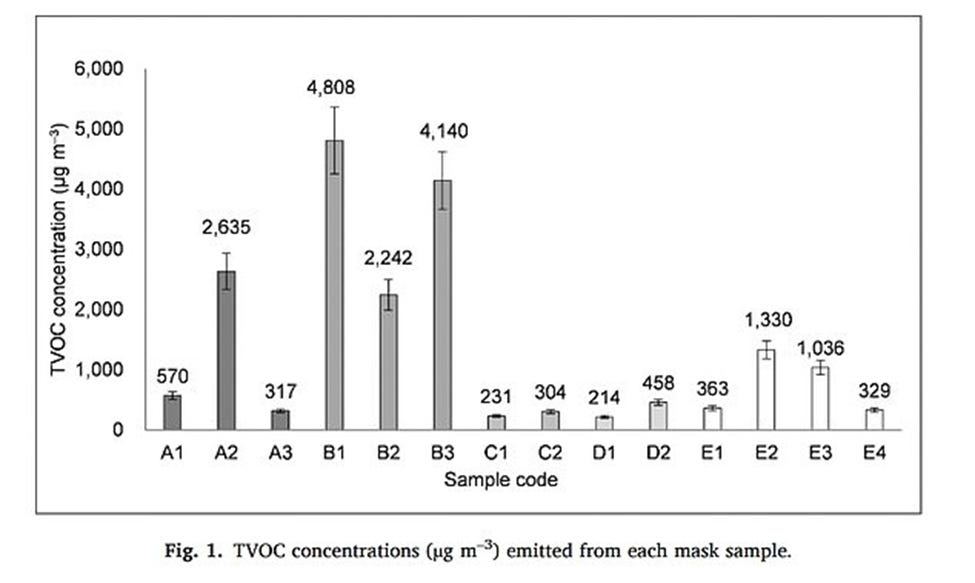If you are planning to pull out your mask again as some jurisdictions consider new mandates, you might want to ask what it’s made of.
Many have been found to release toxic levels of TVOCs (toxic volatile organic compounds, as the graph below illustrates.
The figure comes from a South Korean study shared on the U.S. National Institutes of Health (NIH) website. The sample with the highest amount of TVOCs had 4,808 cubic meters per microgram, which is about 4.8 parts per million–more than eight times the Environmental Protection Agency’s (EPA) recommended limit of 0.5 parts per million in indoor air. Tight-fitting disposable masks are much worse than cotton masks.
Actual health effects are not known, but people forced to wear masks for prolonged periods of time frequently complain of symptoms such as headaches and nausea, which TVOCs can cause.
Some TVOCs can cause central nervous system or liver damage, and even cancer.
“Exposure can be significantly reduced if a mask is opened and left to sit for at least 30 min,” the researchers wrote.
Masks vary. Has yours been tested?
Do the masks even work? Industrial hygienists say they do not; at best they reduce risk by 1%. Engineering controls are needed. And for serious exposures in medical settings, a PAPR (powered air-purifying respirator) is needed.
If you are fretting over “forever chemicals,” the ones trapped next to your nose and mouth should be your first concern.
Additional information:
Mask facts, curated by anesthesiologist Marilyn Singleton, M.D., J.D.
Masking inconsistencies, risks, and benefits
Originally Published by AAPS: https://aapsonline.org/covid-19-whats-in-your-mask/




